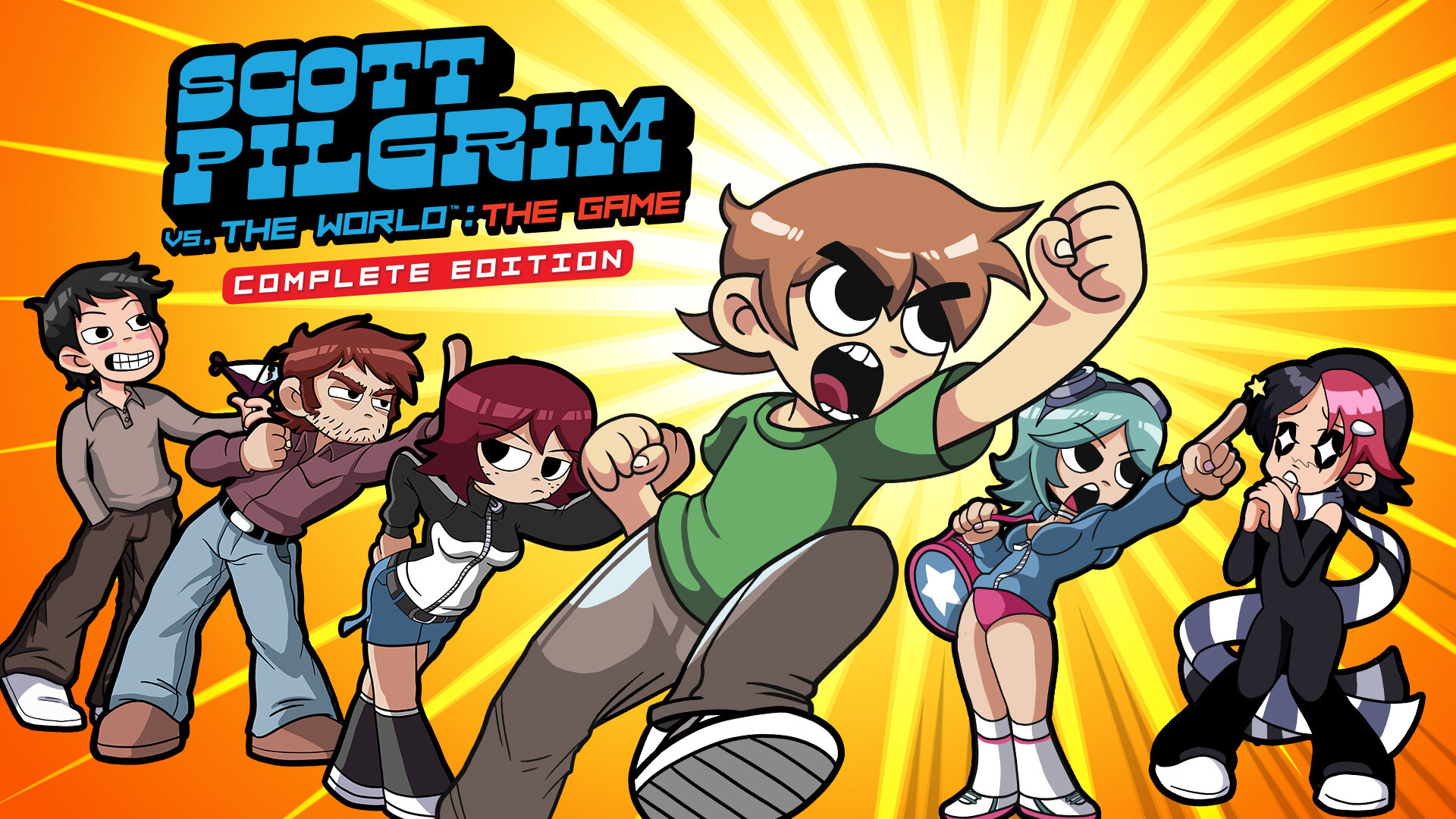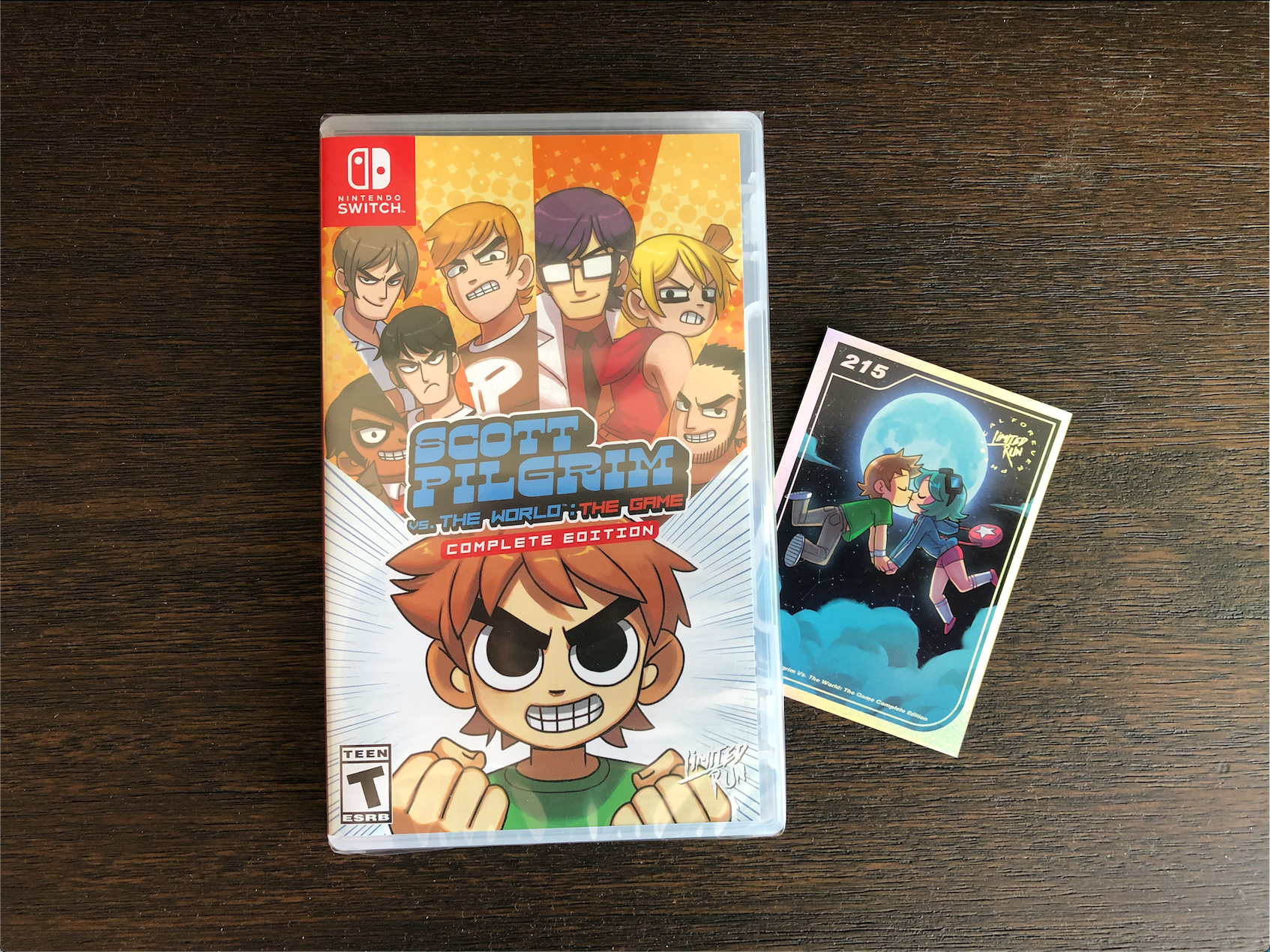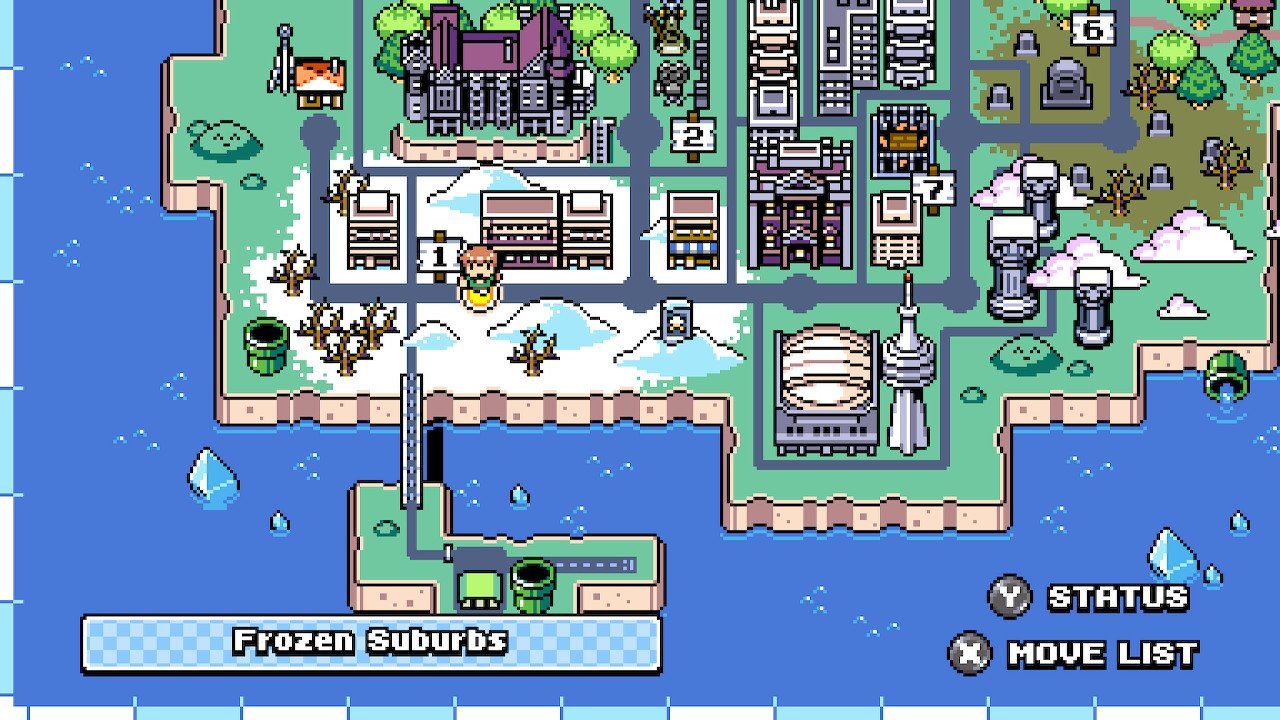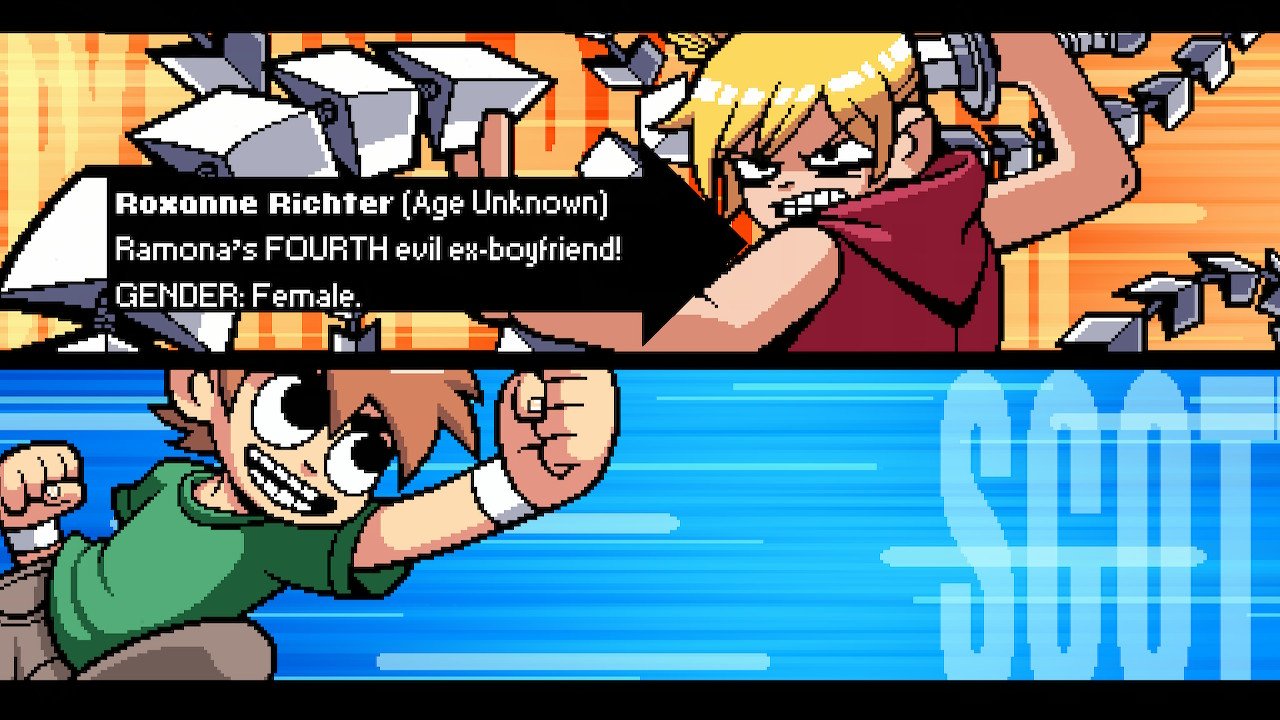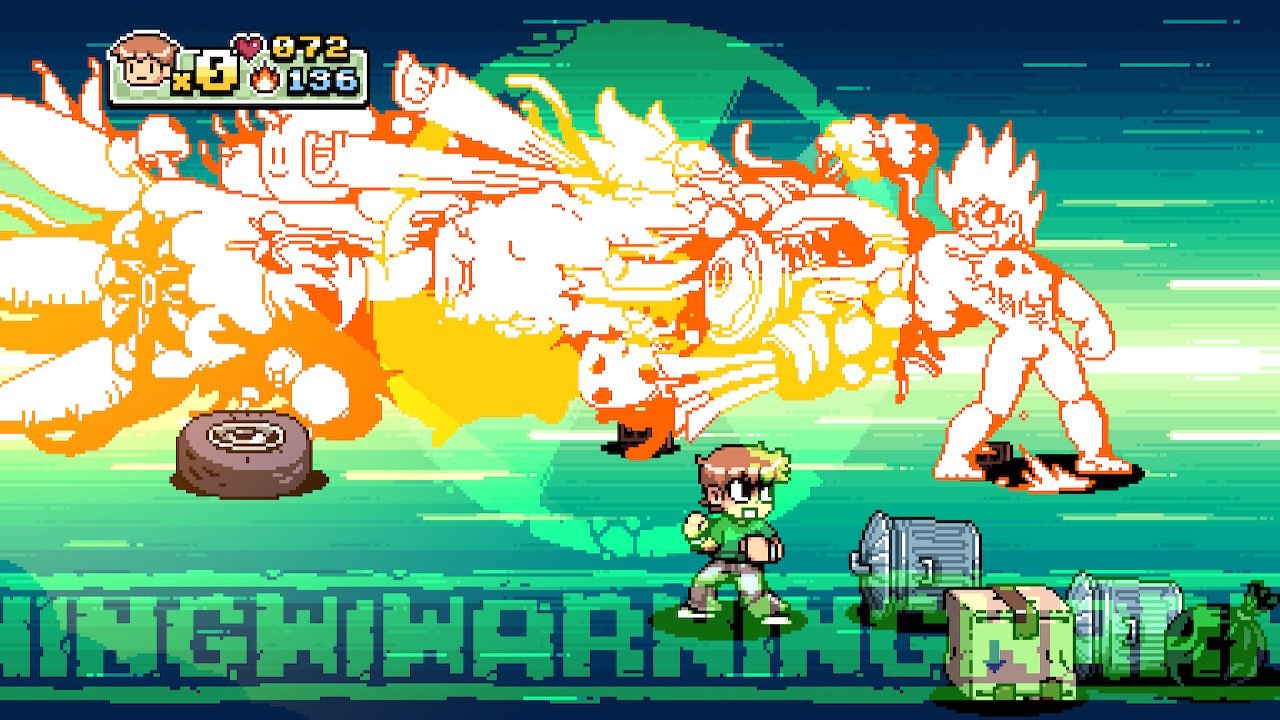Scott Pilgrim vs. The World: The Game – Complete Edition review
Back in 2010, I remember Edgar Wright’s Scott Pilgrim film bursting onto the scene and encapsulating the zeitgeist of video game/comic book/anime nerd culture so perfectly, it basically codified it into an aesthetic.
This was at the outset the trend where traditionally “nerdy” interests rose in prominence, eventually becoming the driving force behind most of modern media’s greatest hits. The bankability of comic book properties, of course, continues to fuel the perpetual success and omnipresence of the MCU (Marvel Cinematic Universe) today.
Perhaps if you were hip enough back in those days, you would have been familiar with the Scott Pilgrim indie comic book on which the film was based. I can’t say that I was aware of it myself, despite the fact that I was frequenting comic book shops in order to keep up with Udon Entertainment’s Street Fighter series at the time. Scott Pilgrim likely would have been right up my alley, but I don’t think I ever saw it in those days.
The movie adaptation though, from one of my all-time favorite directors, grabbed my attention in a big way. It was super funny, had great action, referenced a ton of stuff I liked, and even showed a lot of heart. Sure, Michael Cera seemed a bit miscast as the lead—I once heard him described as “having all the charisma of a wet towel”—but even so, I think he managed to turn in a pretty decent performance. Plus, the rest of the cast was outright inspired. Like, why we don’t see Ellen Wong (who played Knives Chau) in more roles?
But I digress…we’re here to talk about the game after all.
Along with the release of the Scott Pilgrim Vs. The World movie came a video game. And thanks to video games being such a massive influence on the source material, the game had an opportunity to be much more than a cheap tie-in. In a stroke of genius, the developers decided to resurrect the long-dormant genre of the arcade Brawler—also know as the “Belt-Action Scroller” or the “Beat’Em Up”.
Leaning into the tropes of the medium, they aimed to produce something similar to Konami’s Teenage Mutant Ninja Turtles arcade games, or Capcom’s Final Fight, with appropriately old-school pixel art visuals and chiptune sounds. And you know what? They basically did just that. Plus the pop-culture wave the movie unleashed was big enough to carry the game along, provided it released close enough to the film hitting theaters. This Scott Pilgrim game wasn’t going to be your dad’s beat’em up. (Except that it was, and that was kind of the point.)
Around 2010 was also the time in which Indie Games began breaking out to a larger audience. Thanks to digital distribution and the rise of major online marketplaces (such as Steam, XBox Live Arcade, and PSN), games produced by small teams—or even just solo devs—could be sold directly to players as digital-only releases, thus removing the cost of manufacturing physical media as a barrier to entry. This was the era that brought us Cave Story, Super Meat Boy, Fez, Braid, and—my personal favorite—Spelunky. Heck, even Nintendo started to get into the Indie Game space with digital releases on WiiWare.
And this was how we got Scott Pilgrim vs. The World: The Game. Even though it was a movie tie-in, the 2D side-scrolling beat’em up was really more of an indie game. It was released only as a digital download for Xbox 360 and PlayStation 3 in August 2010. No physical copies of the game were produced. And then, thanks to complications with movie rights, it didn’t even stick around on XBLA and PSN for all that long.
In my case, I’d originally bought SPvTW:TG for PS3 on Oct 19, 2014. (And I must’ve got it on sale, because I only paid $3.49!) Unbeknownst to me at the time, I was wise to make my purchase right then. Come December 2014, the game was unceremoniously delisted from digital storefronts, making it suddenly unavailable to anyone who hadn’t already purchased it. The nerdy generational touchstone was gone.
And then, wouldn’t you know it, 10 years later, Ubisoft managed to bring it back!
Almost in time for the 10th anniversary of the movie, they re-released the game, along with all its DLC content, as Scott Pilgrim vs. The World: The Game – Complete Edition. (Wow, that’s a mouthful…) This time it was coming to not only Xbox and PlayStation, but other platforms as well, like the Nintendo Switch. Then thanks to the folks at Limited Run games, you could potentially even buy a physical copy this time. (I knew what I had to do.)
Physical game cart by Limited Run Games
OK, that was a lot of backstory. So how does the game play? Well, all in all, I’d say that the Scott Pilgrim game is quite excellent, assuming you like beat’em ups.
Visually, the game is perfect. Even 10+ years later, it looks amazing. Paul Robertson’s cartoony pixel art style brings the characters of the comic book to life in the most appropriate way possible. It almost feels like this game makes a strong case for the timelessness of the pixel art aesthetic, as 3D games never age this gracefully.
The soundtrack by Anamanaguchi, however, is more of a double-edged sword. On the one hand, the raucous chiptunes not only match the retro style and tone of the game, but also binds the game to a specific moment in time. On the other hand, that time is definitely 2010, and the themes for each level tend to repeat a bit too much for me. While magical at first, the music just starts to ware on my nerves after too long. It’s not that the chiptune soundtrack is in any way lacking, or even bad per se, but I certainly wouldn’t call it timeless either. The default audio options also have the music volume cranked up way higher than most sound effects, which I genuinely don’t understand.
Gameplay-wise, Scott Pilgrim is an experienced-based beat’em up in the vein of River City Ransom. Your characters accrue experience and level-up, unlocking new moves along the way. There are also shops where you can buy health-restoring items in the form of food and drink. Each enemy you defeat will drop whatever cash they have on them—usually in the form of coinage—which is how you collect money to purchase items to begin with. And so, as you put more time into the game, your characters get stronger and faster and more skilled; they also just generally get more fun to play.
Unfortunately this leveling system is actually my biggest complaint about the game. It just takes so long to level-up your character, and I ended up getting my ass handed to me so many times along the way. The fun of grinding for experience wears thin really quickly. Maybe if I were playing multiplayer it wouldn’t have been too bad, you can do 4-player coop after all. But the game is basically impossible when you’re on your own and starting off with a weak/sluggish Level-1 fighter with a limited moveset.
But to make matters worse: any leveling-up you do only applies to the one character you’re playing at the time. If you wanted to build up the whole playable cast to higher levels—again, just to make the game more fun to play—you’d have to do this grinding six separate times. With that in mind, I generally recommended using a cheat code to quickly level-up your characters, especially if you’re mostly playing the game solo. There are lots of resources online for how to do that, of course, including this Game Informer article.
Complaints about the leveling system aside—and I realize that some people love it and prefer that style to the something where your players never progress, like Streets of Rage—Scott Pilgrim is a fantastic beat’em up. Especially if you can get some friends together and play it 4-player, cracking heads across the streets of Toronto is a damn good time.
Plus, Scott has a decent side-kick, and that’s my personal favorite attack in video games.

